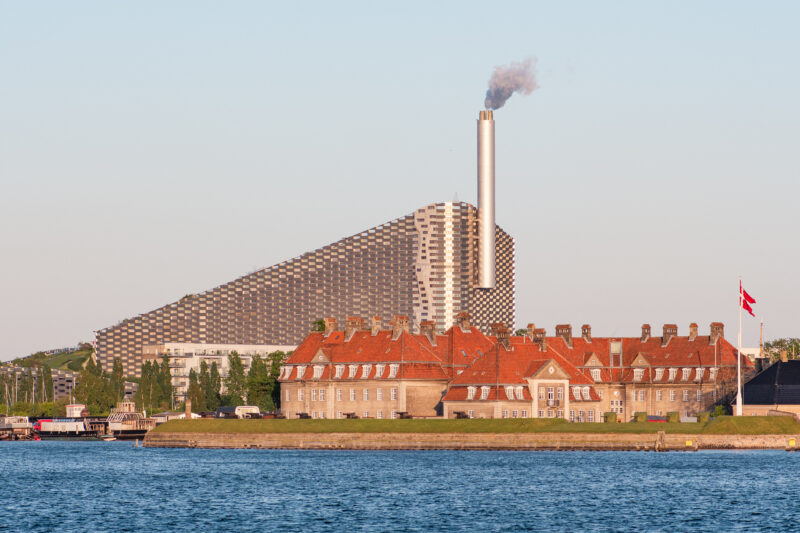Solution provider

Case
District energy
Carbon capture, storage and utilisation
Combined heat and power production
+3


Add the case to your visit request and let us know that you are interested in visiting Denmark
One of the many tools to handle the climate crisis is reducing the total amount of waste produced. But as a society, we need to address the residual waste which cannot be reused or recycled. This is done in a good way at Waste-to-Energy (WtE) plants, where the residual waste is being turned into electricity and district heating.
However, the incineration of the residual waste leads to unavoidable CO2 emissions. Amager Resource Centre (ARC), which supplies electricity and district heating for roughly 90.000 households’ yearly need, emits 560.000 tonnes of CO2 annually from their waste-to-energy plant Amager Bakke.
Carbon capture is particularly interesting in relation to energy utilisation of waste, as it is possible to capture large amounts of biogenic CO2, whereby a plant can help to actively lower the total amount of CO2 in the atmosphere when storing the biogenic CO2 in the underground. About two-thirds of the CO2 discharge from Amager Bakke consists of biogenic CO2.
Following successful trials on a smaller pilot plant in 2021, ARC inaugurated a state-of-the-art carbon capture demonstration unit in late 2023. The plant captures up to 4 tons of CO2 from the flue gas daily at Amager Bakke and converts it into liquid form. The long-term goal of ARC is to capture CO2 by net-zero energy consumption meaning that the surplus heat from the capture process will be turned into district heating.
In connection with the construction of the demonstration plant, ARC entered into an agreement with Linde Gas, which supplies industrial gases to large parts of the industry in Denmark, as well as abroad. The captured CO2 on Amager Bakke is of food grade quality and sold for industrial use including for cultivating vegetables such as tomatoes and cucumbers at Østervang, Zealand, which is one of the country’s largest horticultures.
Since ultimo 2023, the demonstration plant has been in operation, capturing up to 4 tonnes of CO2 daily. It is an important step on the way towards ARC’s ultimate goal of capturing CO2 at large scale, with the potential to contribute to a significant CO2 reduction of up to 500.000 tonnes per year. This amount is equivalent to over 2 percent of the reduction needed to fulfil Denmark’s entire climate goal.
Additionally, calculations show that the residual heat from the process at a future full-scale plant on Amager Bakke will be able to fully cover the heat demand nearby areas which today have individual gas boilers as heat sources. Further avenues are also being explored with regards to the utilisation of the captured Co2 both nationally and internationally.
Ultimately, the demonstration project showcases a coherent value chain for carbon capture while making a crucial contribution to building up and disseminating new knowledge.